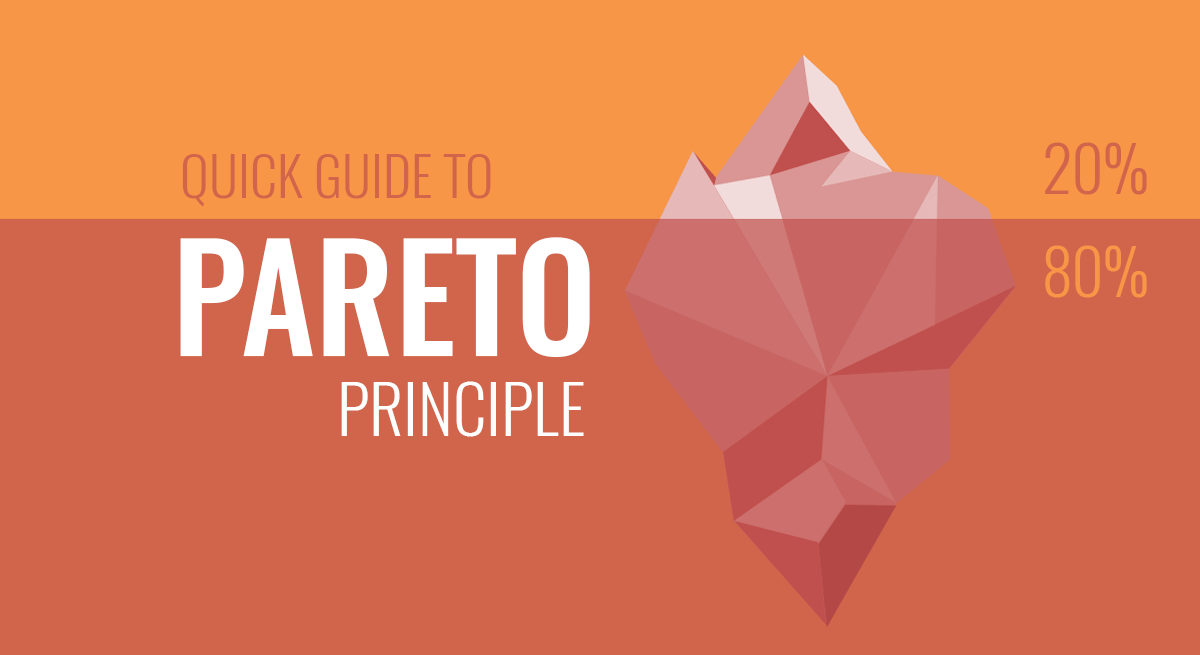
Some observations by economists, sociologists and philosophers have been remarkable in shaping the way people view the world. One such observation was by an Italian economist named Vilfredo Pareto. His observation regarding the wealth inequality in Italy led to the Pareto principle. This principle is also known as the 80/20 rule and explains something quite valuable regarding the cause and effect that has had an impact from economics to sports, mathematics, quality control, computing and even the healthcare industry.
- What is the Pareto Principle?
- Pareto Principle Definition
- History of the Pareto Principle
- Quick Overview of the Pareto 80/20 Principle
- Best Pareto Diagrams and Infographics for PowerPoint
- Final Words
What is the Pareto Principle?
Named after Vilfredo Pareto, the Pareto Principle implies that 80% of effects come from 20% of causes. This means that there is an unequal relationship of inputs and outputs. The Pareto principle specifies the fact that the relationship between inputs and outputs is unbalanced. Unlike other principles, the Pareto principle is an observation and cannot be deemed a law. While the principle holds true in many cases, it cannot be considered true universally.
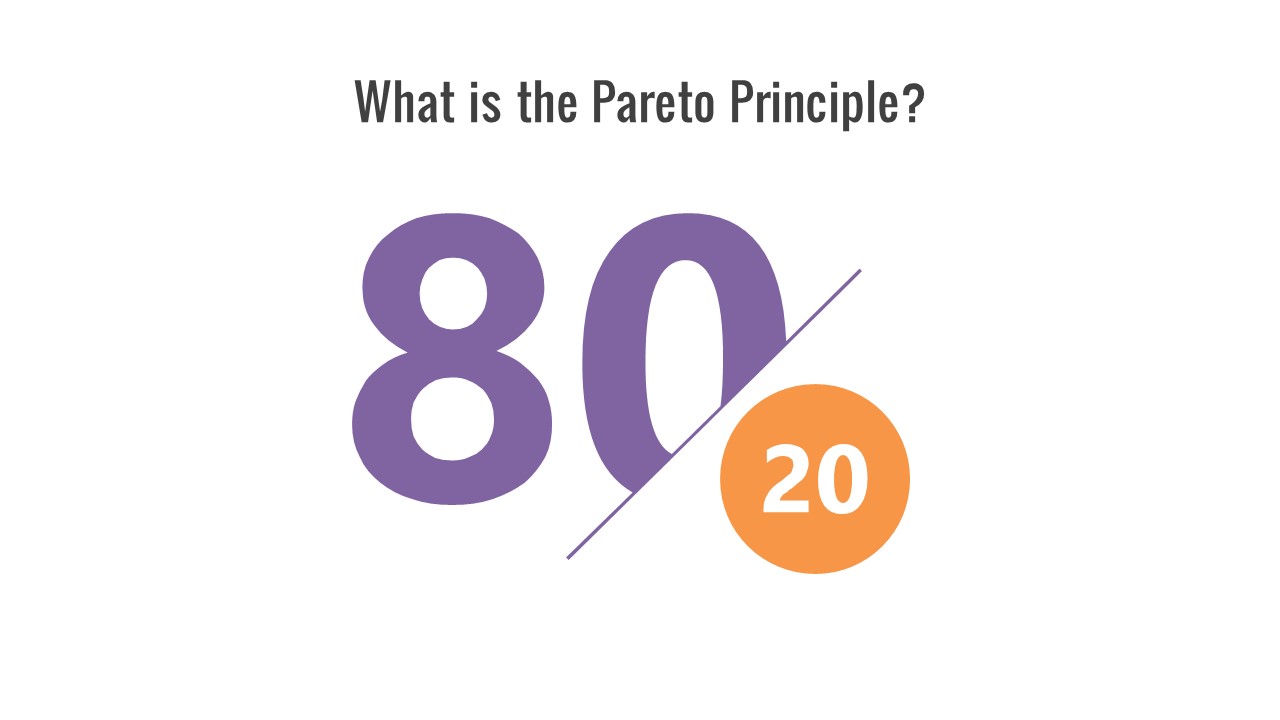
Pareto Principle Definition
Let’s take a look at a definition of the Pareto principle from the Cambridge Dictionary:
The idea that a small quantity of work or resources (= time, money, employees, etc.) can produce a large number of results:
The Pareto principle, when applied to time, states that 20% of your time determines 80% of your production.
The Pareto principle can be applied to quality improvement, as the majority of problems (80%) are produced by a few key causes (20%).
-Cambridge Dictionary
History of the Pareto Principle
Vilfredo Pareto, who was an Italian sociologist, engineer, economist and philosopher determined that 80% of Italy’s wealth was in the hands of only 20% of the population. Such observations by Vilfredo Pareto eventually led to an observation by Joseph M. Juran that 80% of effects came from 20% of causes. Juran was a management consultant who translated Pareto’s observations into the 80/20 rule, also known as the Pareto principle.
Juran considered the Pareto principle to be among the few vital resources among the ‘useful many’. His work in quality management led to the development of various concepts like lean manufacturing and another concept closely related to the 80/20 principle; Six Sigma.
Quick Overview of the Pareto 80/20 Principle
The video given below provides a quick overview of the Pareto 80/20 principle and its application across various industries.
Pareto Principle Use and Examples
The 80/20 Pareto principle is commonly used in quality management for planning decisions, six sigma and performance management. It is also quite helpful in business planning and a range of other industries. Let’s explore some of the uses and examples of the Pareto principle.
Pareto Principle in Business and Sales
Pareto principle is quite effectively used in business and sales, it encourages focus on specifics, such as certain activities to help improve results. The principle can be applied to market segments, current customers, pricing of products, employees, etc. For example, 20% of sales staff drives 80% sales. In manufacturing we can apply the 80/20 principle to observe results such as; 80% output is produced by only 20% of the inputs or 80% activity can be conducted using 20% resources.
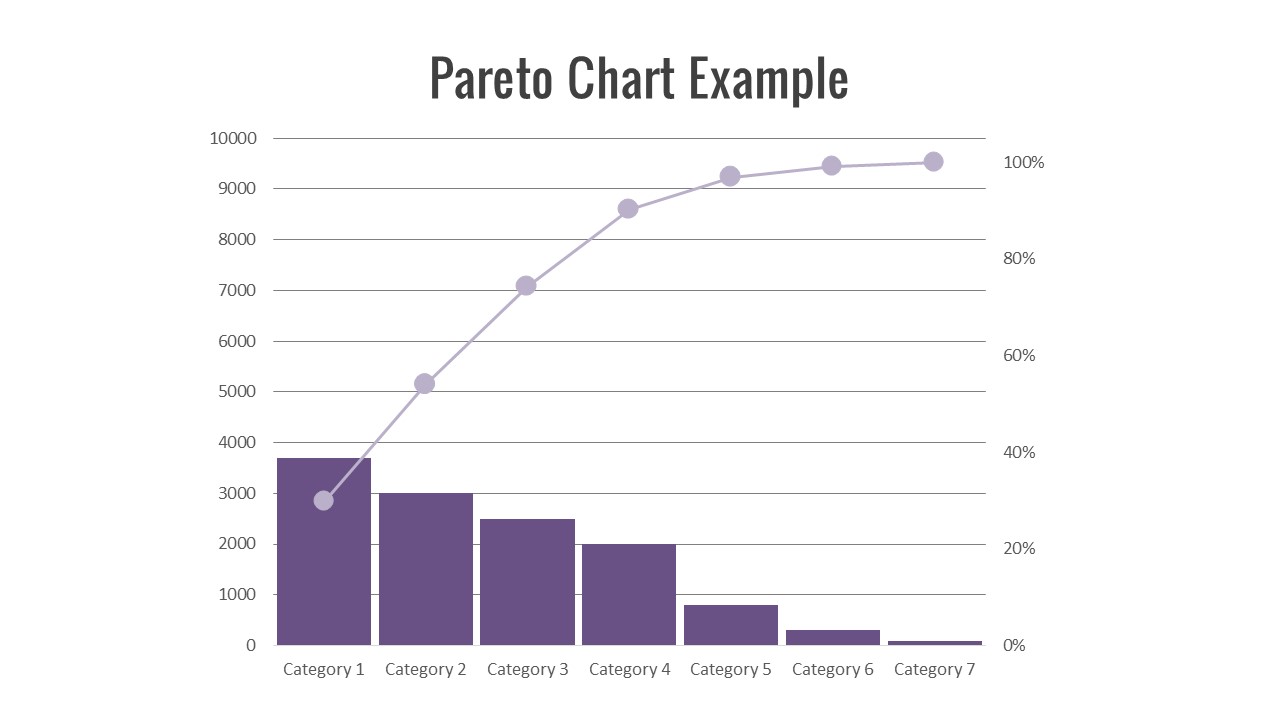
Companies engaged in financial advisory also make use of the Pareto principle, e.g. by charging 80% to 20% of clients who have the highest assets. This is in line with the famous axiom that 80% of sales are generated from 20% of the clients.
Pareto Principle in Economics
Pareto’s original observation regarding the inequality in wealth in Italy was followed by his surveys in other countries, where the results were surprisingly similar. The Pareto principle was seen in effect in a 1992 United Nations report which showed that 82.7% of the world’s income was controlled by merely 20% of the world population. The Pareto principle was also observed in the United States where it was observed that 20% of the rich paid 80-90% taxes in 2000 and 2006. The Pareto principle is therefore often observed in economics and serves as a guideline for further investigating inequality of wealth, as well as the cause and effect affecting modern-day economics. For example, the Gini coefficient and the Hoover index are measures used to understand inequality in countries. Both indices make use of the Pareto principle “A:B” notations are used for calculation, such as by using 0.8:0.2. Similarly, the Pareto Index in economics is used for understanding income and wealth distribution.
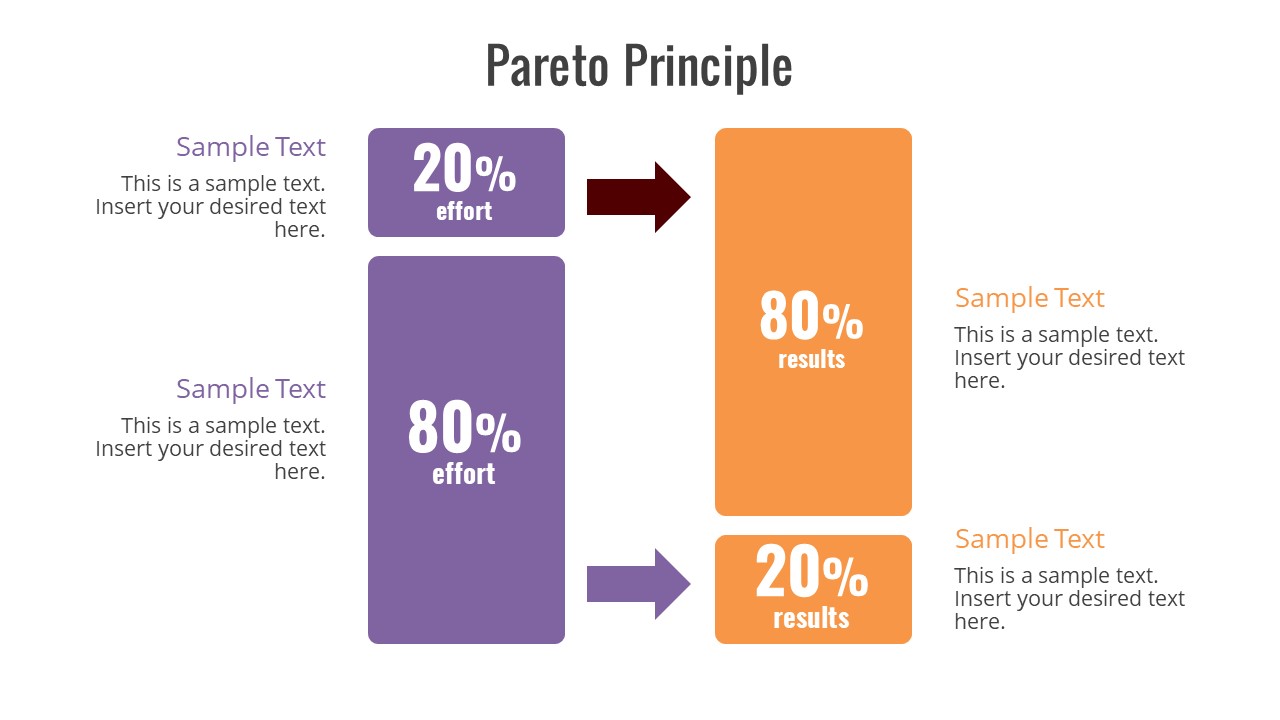
Source: Pareto Analysis Visualization Idea
Pareto Principle in Mathematical Notes
As many concepts in economics require mathematical calculations, the Pareto principle is visible across various types of calculations. One such calculation method is Pareto distributions, which is a power-law probability distribution used for social and scientific observable phenomena. The Pareto Index is another example, which is a measure of income or wealth distribution. In fact, Pareto related 80/20 phenomena have even been observed in wildfires and earthquakes. The principle is therefore used in mathematical notes in a wide array of fields where the 80/20 principle is observed.
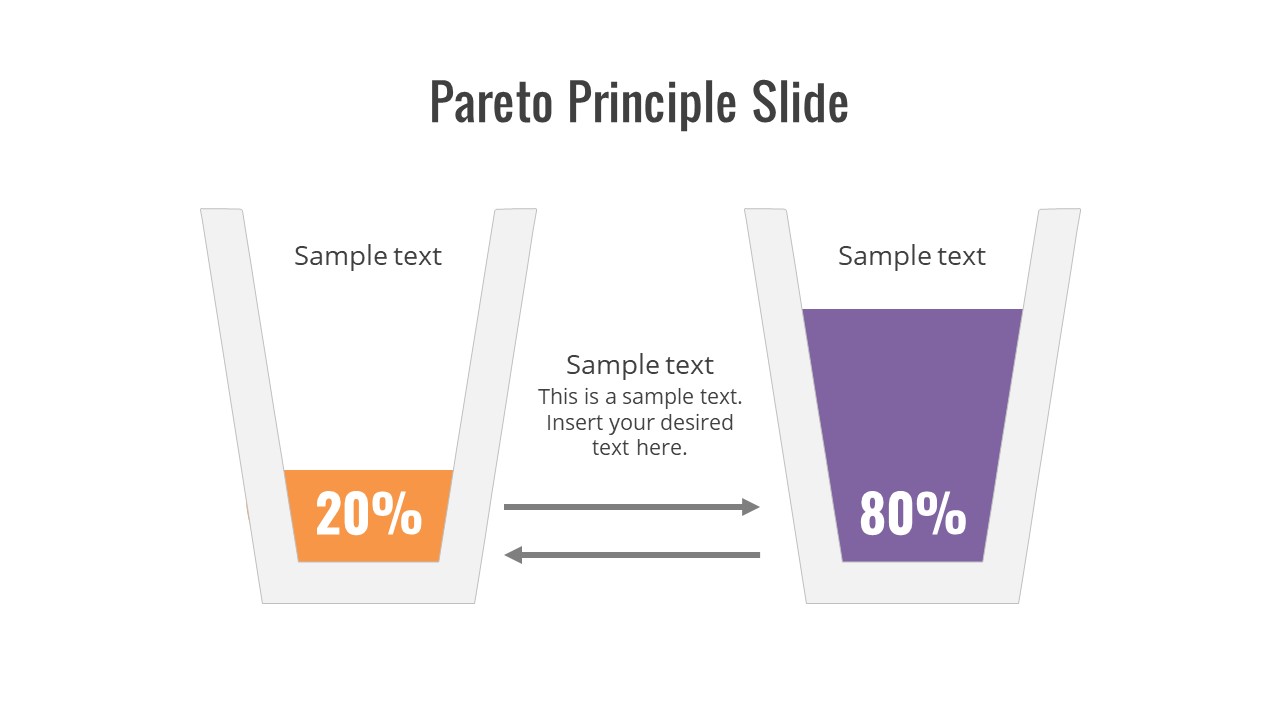
Pareto Principle in Quality Control
The Pareto principle has various applications in quality control, including the Pareto chart. This chart is one of the major tools used in QC and Six Sigma. Furthermore, Pareto as a principle is used for baselines such as the ABC and XYZ analysis, which is used in procurement and logistics for optimizing stocks and costs. In fact, Joseph M. Juran, the father of many quality management concepts was the founder of the Pareto principle.
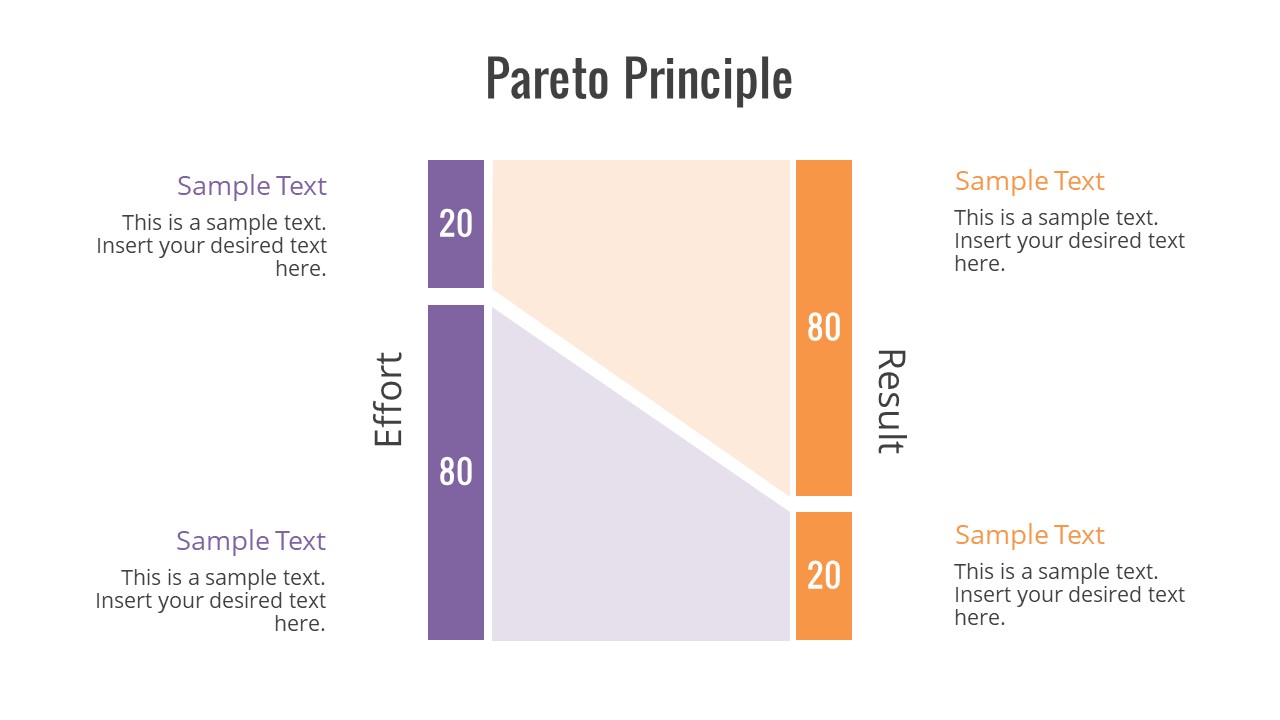
Source: Pareto Visualization Idea by SlideModel
Pareto Principle in Computing
The Pareto principle in computing is used for optimization related efforts, such as controlling bugs, coding software and estimating coding costs. In computing the Pareto principle is used for Constructive Cost Model (COCOMO) cost estimates which are used for software coding. Microsoft in various examples observed the principle in practice. For example, it was observed that by fixing 20% of widely reported bugs, 80% errors and crashes were eliminated. Similarly, it was observed that 80% of software could be written in 20% of the time allocated for coding. The principle in coding and software development plays an important role in managing costs, software development and resolving software issues efficiently. In the wake of multiple operating systems and forks of mobile OS like Android deployed across a plethora of smartphones, the application of the Pareto principle in computing might be more important than ever before.
Pareto Principle in Sports
Though not scientifically tested, the 20/80 principle in sports is applied to athletic training. Where 20% of training affects 80% impact. The principle has also been used in baseball, where 15% players have been observed to lead to 85% wins and 85% of players have been observed to be responsible for 15% wins. Hence, the Pareto principle is used in sports with an 80/20 or similar ratio to analyze player performance. It can be used for analyzing the effect of training activities and habits of athletes, as well as to determine the win-loss ratio based on the performance of players.
Pareto Principle in Occupational Health and Safety
In occupational health and safety, the Pareto principle is used to prioritize resources to eliminate hazards. For example, the assumption that eliminating 20% hazards can prevent 80% of injuries can help prioritize resources for eliminating 20% hazards to reduce injuries. The principle can help counter major health and safety hazards by focusing energy on specific issues which might reduce the chance of injury and hazards, instead of committing too many resources aimlessly.
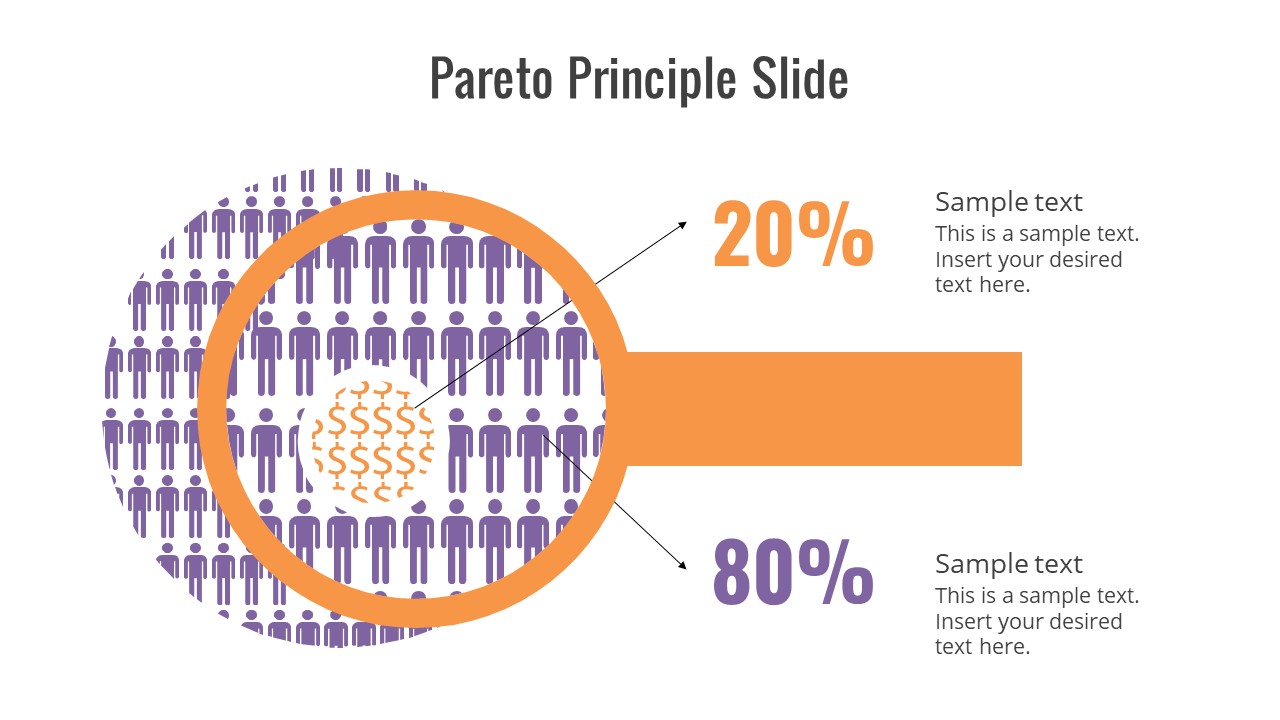
Source: Pareto Visualization Idea by SlideModel
Best Pareto Diagrams and Infographics for PowerPoint
Final Words
While the original observation of the Pareto principle was related to the distribution of wealth among the population; since then it has been acknowledged as a phenomenon with a wide range of applications. The principle has been observed and applied in a number of industries, as well as to understand socio-economic, seismic, performance, hazards and other types of phenomena. The Pareto principle can also be applied in personal life. For example, 80% of your tasks can be completed in 20% of the allocated time. This can be further understood by looking at concepts like analysis paralysis,Getting Things Done concept and Parkinson’s Law. You can also learn more about how to improve productivity and efficiency in your personal life from our guide aboutovercoming procrastination.
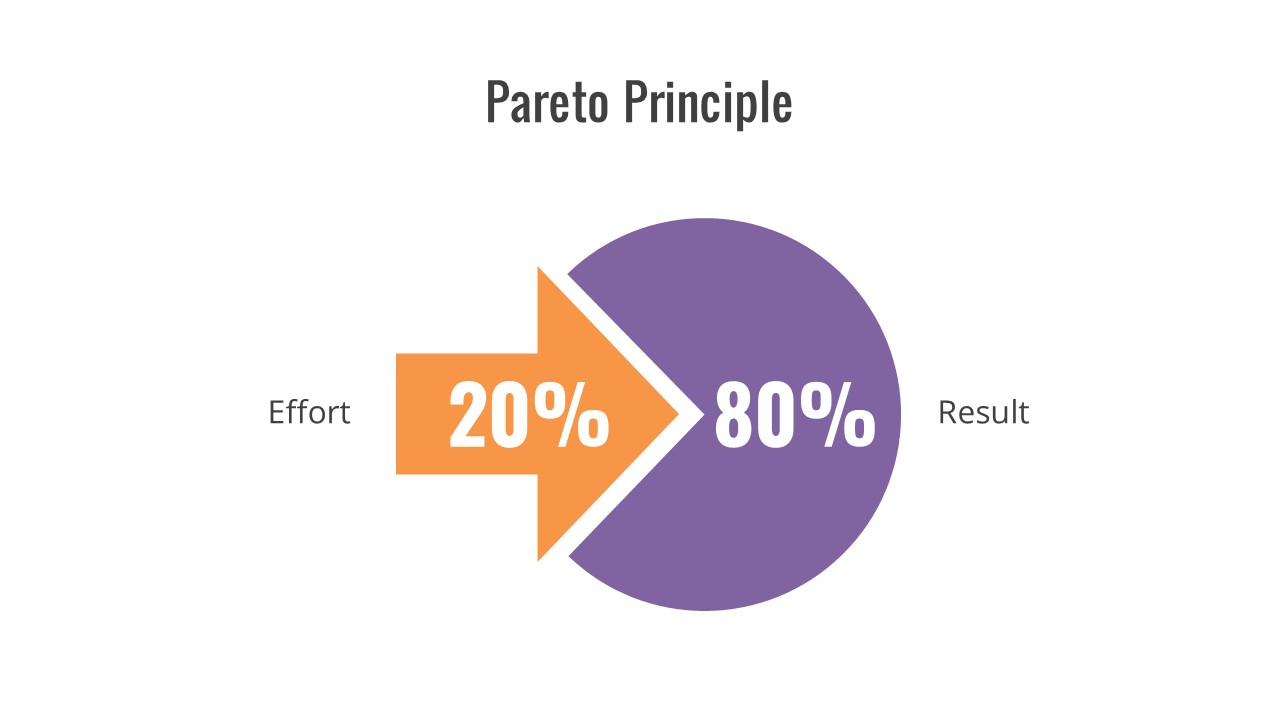
Source: Example of Pareto Visualization Idea by SlideModel
The Pareto principle is not a law and is more of an observable phenomenon that is more common than many people realize. However, it has implications that can help us understand and address a number of issues, across multiple industries and even personal life. Focusing on the 80/20 principle can be quite helpful in reducing costs, improving efficiency and eliminating waste of resources. However, it is not a universal phenomenon and trying to apply it where it does not fit can lead to misleading calculations. One should not have an approach meant to validate the 80/20 rule, instead of looking at things objectively. Perhaps the most important takeaway from the 80/20 principle is that things are not in balance and therein lies many of our answers.


